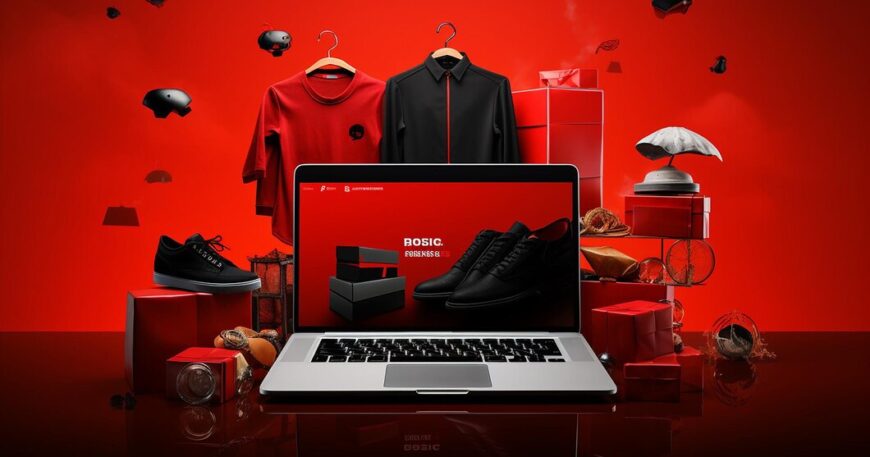In the ever-evolving digital marketplace, businesses are under increasing pressure to maintain visually compelling and high-performing e-commerce platforms. As Shopify continues to dominate as a preferred e-commerce solution, the demand for specialized design services has surged. In 2025, partnering with the right Shopify website design company is more critical than ever to ensure success in a saturated market. From AI-driven design enhancements to ultra-personalized user experiences, this year is all about leveraging innovation for impactful online retail.
The Rise of Niche-Focused Shopify Design Companies
2025 has marked a shift toward specialization. Instead of hiring generalized web designers, businesses now seek a Shopify website design company that understands their industry inside and out. Whether it’s fashion, electronics, or health & wellness, niche-focused agencies offer tailored experiences that result in better UX, higher conversions, and more brand loyalty.
These companies combine domain knowledge with Shopify’s powerful platform to build intuitive navigation, branded aesthetics, and conversion-focused flows. For businesses that operate in specific verticals, this trend isn’t just helpful—it’s non-negotiable.
AI-Powered Personalization
Artificial Intelligence is revolutionizing how online stores look and behave. The best Shopify design firms are embracing AI to dynamically adapt product layouts, recommend products, and even adjust color themes based on user behavior. This highly tailored experience boosts customer satisfaction while driving a noticeable increase in Average Order Value (AOV).
A 2024 report from McKinsey noted that businesses integrating AI into their e-commerce design experience a 20% increase in user engagement. This makes prioritizing AI integration a strategic advantage for 2025 and beyond.
Mobile-First Design Remains King
With over 70% of eCommerce traffic originating from mobile devices, mobile-first design is not optional—it’s foundational. Top Shopify design firms in 2025 are creating mobile experiences that mirror the functionality and aesthetics of desktop, if not exceed them.
Expect to see:
- Touch-optimized UI components
- Sticky navigation bars
- Mobile-specific checkout flows
- Fast-loading product galleries
These improvements play a vital role in lowering bounce rates and significantly enhancing customer retention on mobile platforms.
Speed Optimization as a Design Standard
Website speed is no longer a backend technical issue—it’s part of the design process. Google Core Web Vitals, introduced in recent years, have become more prominent in ranking factors. A Shopify website design company that ignores speed optimization is simply behind the times.
Designers now use lighter code libraries, optimize image sizes automatically, and implement lazy loading for smoother user experiences. In 2025, speed is design.
Storytelling Through Interactive UX
Design goes beyond visuals—it’s about crafting a powerful narrative that communicates your brand’s identity and values. The best Shopify designers use interactive elements like parallax scrolling, hover animations, and embedded micro-videos to walk users through a narrative journey.
This storytelling design keeps users emotionally engaged and invested. It converts casual visitors into enthusiastic brand supporters and loyal buyers.
Integration-Ready Design Architecture
Modern Shopify websites aren’t standalone—they’re hubs connected to marketing, CRM, inventory, and support tools. Top agencies build websites that are integration-ready from day one. Whether it’s Klaviyo for email, Gorgias for customer support, or Hotjar for analytics, these integrations are embedded into the design structure.
By 2025, this modular, future-proof approach is what separates amateur work from professional-grade websites.
Sustainability and Ethical Design
Another notable trend in 2025 is the rise of ethical and sustainable design. Consumers increasingly care about eco-conscious brands, and that includes how websites are built. Agencies are adopting minimalist design patterns that use fewer resources and encourage mindful consumer behavior.
Some firms also offer carbon offsetting for their hosting environments, embedding sustainability right into the core of the online store’s experience.
Cross-Border and Multi-Currency Design
With global e-commerce booming, Shopify stores need to cater to international audiences. Top-tier design firms now build with multi-language support, dynamic currency conversion, and geo-specific content in mind.
This global-first approach opens the doors to new markets without requiring separate websites or duplicate content.
Data-Driven Design Decisions
Gone are the days of guesswork. The leading Shopify design companies in 2025 make every design choice based on data. Using heatmaps, A/B testing, and user session recordings, they refine layouts to maximize conversions.
Design has become a scientific discipline, backed by analytics and user behavior, not just aesthetic preferences.
Voice Search and Accessibility
Voice commerce is on the rise. Smart Shopify designers are optimizing headers, metadata, and navigation for voice queries. At the same time, accessibility compliance (WCAG 2.1 and beyond) is a must—not only for ethical reasons but also to reach broader audiences and avoid legal trouble.
Summary of Key Trends
| Trend | Description |
| Niche-Focused Design | Specialized Shopify firms targeting specific industries |
| AI Integration | Personalized layouts, recommendations, and behavior adaptation |
| Mobile Optimization | Touch-optimized, responsive, and fast mobile design |
| Speed as a Priority | Lazy loading, compression, and lightweight frameworks |
| Story-Driven UX | Emotionally engaging, interactive web storytelling |
| Integration-Friendly | Design that works with top eCommerce tools |
| Ethical Design | Sustainability, minimalist design, and green hosting |
| Global Readiness | Multi-language and currency support built in |
| Data-Backed Decisions | Heatmaps and analytics to guide UX changes |
| Accessibility | Voice search optimization and disability-friendly design |
Conclusion
In 2025, choosing the right Shopify website design company goes beyond aesthetics. It’s about aligning with a partner that embraces innovation, personalization, sustainability, and data-driven growth. From AI-powered personalization to ethical, mobile-first design, the trends shaping Shopify’s ecosystem reflect a deeper understanding of what today’s users truly want.
Businesses that invest in expert design services will not only stand out but also dominate their markets through seamless, intelligent, and emotionally resonant eCommerce experiences. If you want to future-proof your online store, now is the time to act.


